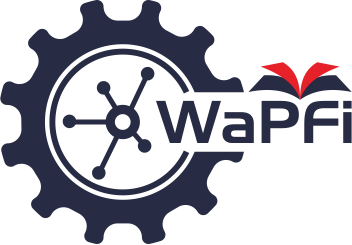A bibliometric analysis of microlearning video for physics online learning research (2013–2023)
Abstract
Challenges in the future that can be competitive, namely by using interactive learning media based on the internet and technology, one of which is microlearning video learning. This research was conducted by analyzing the "Video Microlearning" model. Bibliometrics retrieved from several document types, document sources, top contributing countries, top authors, top affiliations, top source titles, top relevant or trending keywords, research citations that include research findings along with recommendations, and a visualization of the top research mappings that quoted over the past ten years. The results of this study used a quantitative descriptive method of 166 Scopus database metadata documents that were used, processed, and analyzed with Biblioshiny and a mapping application using VOSviewer. In general, the United States (USA) is the country with the most publications, and Cui T is the figure who contributes the most to research. Trends in microlearning video research over the years (2013-2023) resulting from bibliometrics show several trends, namely education, e-learning-based learning, video recording-based learning, human experiment-based learning, teaching-based learning, social media-based learning, motivation-based learning, problem-solving based l_earning, and various other trends
Downloads
References
Adhipertama, I. M. C., Jampel, I. N., & Sudatha, I. G. W. (2020). The Development of Learning Video Based on Micro-Learning Principle Towards Science Subject in Junior High School. Indonesian Journal Of Educational Research and Review, 132-143..
Beste, T. (2023). Knowledge transfer in a Project-Based organization through microlearning on cost-efficiency. The Journal of Applied Behavioral Science, 59(2), 288-313.
Bezovski, Z., & Poorani, S. (2016, March). The evolution of e-learning and new trends. In Information and Knowledge Management (Vol. 6, No. 3, pp. 50-57). Iiste.
Biggs, J. (2012). What the student does: Teaching for enhanced learning. Higher education research & development, 31(1), 39-55.
Buchem, I., & Hamelmann, H. (2010). Microlearning: a strategy for ongoing professional development. eLearning Papers, 21(7), 1-15.
Buhu, A., & Buhu, L. (2019). The Applications of Microlearning in Higher Education in Textiles. ELearning & Software for Education, 3.
DÃaz Redondo, R. P., Caeiro RodrÃguez, M., López Escobar, J. J., & Fernández Vilas, A. (2021). Integrating micro-learning content in traditional e-learning platforms. Multimedia Tools and Applications, 80, 3121-3151.
Emerson, L. C., & Berge, Z. L. (2018). Microlearning: Knowledge management applications and competency-based training in the workplace. UMBC Faculty Collection.
Febrianto, P. T., Mas’udah, S., & Megasari, L. A. (2020). Implementation of online learning during the covid-19 pandemic on Madura Island, Indonesia. International Journal of Learning, Teaching and Educational Research, 19(8), 233-254.
Ghafar, Z., Abdulkarim, S. T., Mhamad, L. M., Kareem, R. A., Rasul, P. A., & Mahmud, T. I. (2023). Microlearning As a Learning Tool for Teaching and Learning in Acquiring Language: Applications, Advantages, And Influences on the Language. Canadian Journal of Educational and Social Studies, 3(2), 45-62.
Giurgiu, L. (2017). Microlearning an evolving elearning trend. Scientific Bulletin, 22 (1), 18–23. Recuperado de https://doi. org/10.1515/bsaft-2017-0003.
Hadi, S. H., Permanasari, A. E., Hartanto, R., Sakkinah, I. S., Sholihin, M., Sari, R. C., & Haniffa, R. (2022). Developing augmented reality-based learning media and users’ intention to use it for teaching accounting ethics. Education and Information Technologies, 1-28.
Horst, R., & Dörner, R. (2019, December). Mining virtual reality nuggets: A pattern-based approach for creating virtual reality content based on microlearning methodology. In 2019 IEEE International Conference on Engineering, Technology and Education (TALE) (pp. 1-8). IEEE.
Jahnke, I., Lee, Y. M., Pham, M., He, H., & Austin, L. (2020). Unpacking the inherent design principles of mobile microlearning. Technology, Knowledge and Learning, 25, 585-619.
Kapp, K. M., & Defelice, R. A. (2019). Microlearning: Short and sweet. American Society for Training and Development.
Khlaif, Z. N., & Salha, S. (2021). Using TikTok in education: a form of micro-learning or nano-learning?. Interdisciplinary Journal of Virtual Learning in Medical Sciences, 12(3), 213-218.
Khong, H. K., & Kabilan, M. K. (2022). A theoretical model of micro-learning for second language instruction. Computer Assisted Language Learning, 35(7), 1483-1506.
Kioupi, V., & Voulvoulis, N. (2019). Education for sustainable development: A systemic framework for connecting the SDGs to educational outcomes. Sustainability, 11(21), 6104.
La Marca, A., & Longo, L. (2017). Addressing student motivation, self-regulation, and engagement in flipped classroom to decrease boredom. International Journal of Information and Education Technology, 7(3), 230.
Metzler, M. (2017). Instructional models in physical education. Taylor & Francis.
Mohammed, G. S., Wakil, K., & Nawroly, S. S. (2018). The effectiveness of microlearning to improve students’ learning ability. International Journal of Educational Research Review, 3(3), 32-38.
Nugraha, W. S. (2018). Peningkatan kemampuan berpikir kritis dan penguasaan konsep IPA siswa SD dengan menggunakan model problem based learning. Jurnal Pendidikan Dasar, 10(2), 115-127.
Riowati, R. &. (2022). Peran guru penggerak pada merdeka belajar untuk memperbaiki mutu pendidikan di Indonesia. Journal of Education and Instruction (JOEAI), 5(1), 1-16.
Shamir-Inbal, T., & Blau, I. (2022). Micro-learning in designing professional development for ICT teacher leaders: The role of self-regulation and perceived learning. Professional Development in Education, 48(5), 734-750.
Sun, G. C. (2015). Drawing micro learning into MOOC: Using fragmented pieces of time to enable effective entire course learning experiences. International Conference on Computer Supported Cooperative Work in Design (CSCWD).
Varghese, S. S., Ramesh, A., & Veeraiyan, D. N. (2019). Blended Moduleâ€Based Teaching in Biostatistics and Research Methodology: A Retrospective Study with Postgraduate Dental Students. Journal of dental education, 83(4), 445-450.
Wulandari, T. D. (2022). Keefektifan pembelajaran IPA berbantuan virtual reality untuk meningkatkan kemampuan kognitif siswa SMP di abad 21: .REVIEW ARTIKEL. In Proceeding Seminar Nasional IPA.






